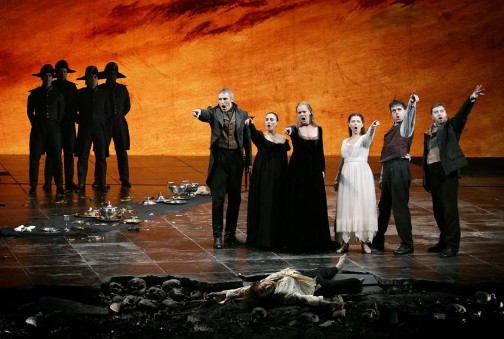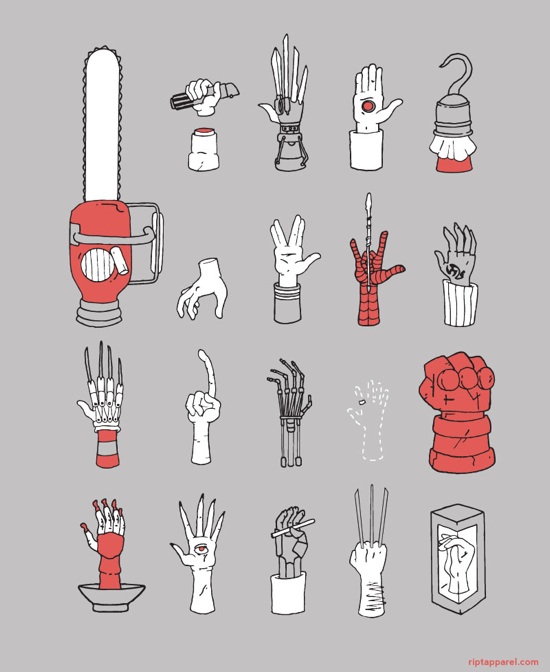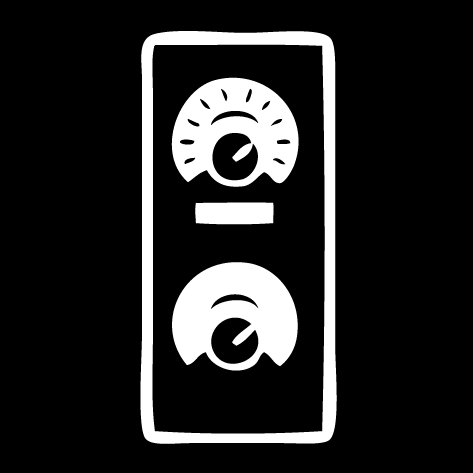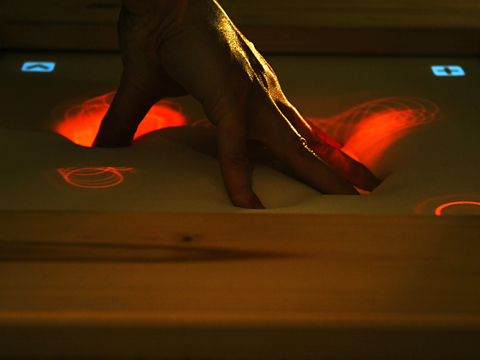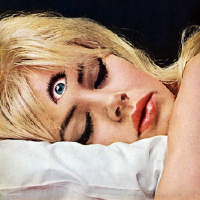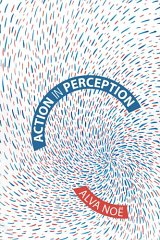embodiment
Merleau-Ponty’s philosophy
On 24, Sep 2009 | 3 Comments | In books | By David Birnbaum
“Yes or no: do we have a body—that is, not a permanent object of thought, but a flesh that suffers when it is wounded, hands that touch?” — The Visible and the Invisible
Merleau-Ponty’s Philosophy by Lawrence Hass was the first full book I read on the great phenomenologist. If you’re fascinated by sensation, perception, synesthesia, metaphor, and flesh (and frankly, who isn’t?), please read it! It offers many wonderful revelations. I’ll briefly review the following topics from the book:
- Sensation/perception is a false dichotomy.
- Perception is “contact with otherness.”
- Synesthesia is a constant feature of experience.
- The concepts of “reversibility” and “flesh”
Organ-ize
On 03, Sep 2009 | One Comment | In cognition, language, music | By David Birnbaum
I was inspired to research the words “organ” and “organized” after I read a statement made by Merleau-Ponty scholar Lawrence Hass that “perceptions are organized (
Here’s a typical definition of organize:
- v. arrange in an orderly way
- v. to make into a whole with unified and coherent relationships (yourdictionary.com)
These definitions aren’t satisfying. What makes an organization orderly, unified, and coherent? The definition Hass implies is much more illuminating: to be organized is to be divided according to the sense organs of a perceiver. Now we’re getting somewhere!
But moving in a slightly different direction, what the hell are we doing playing a musical instrument called an “organ”? And what does all this mean for Edgard Varèse’s famous definition of music as “organized sound”?
organ
- n. from the Greek organon meaning “implement”, “musical instrument”, “organ of the body”, literally, “that with which one works” (Online Etymology Dictionary)
- n. an instrument or means, as of action or performance
(Dictionary.com)
Substituting “organ” in Varèse’s famous definition with these, the word “music” means:
- music is sound with which one works
- music is sound that is a means of action or performance
For the first time I understand what Varèse meant when he said music is “organized sound.” We use the word music to mean sound that is utilized by someone to work or perform. Nothing more, nothing less.
Embodied music cognition
On 08, Oct 2008 | No Comments | In books, cognition, music, neuroscience | By David Birnbaum
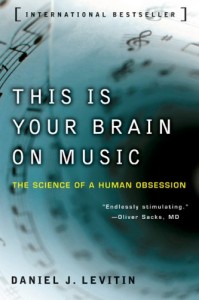 This is Your Brain on Music is a great introductory book on the neuroscience of music. Although I found it weighted a bit too much toward popular science for my liking, that was its stated purpose, and there was still plenty of good information in it.
This is Your Brain on Music is a great introductory book on the neuroscience of music. Although I found it weighted a bit too much toward popular science for my liking, that was its stated purpose, and there was still plenty of good information in it.
Here we have an explanation of musical timing as an analogy for a moving body:
Virtually every culture and civilization considers movement to be an integral part of music making and listening. Rhythm is what we dance to, sway our bodies to, and tap our feet to… It is no coincidence that making music requires the coordinated, rhythmic use of our bodies, and that energy be transmitted from body movements to a musical instrument. (57)
‘Tempo’ refers to the pace of a musical piece—how quickly or slowly it goes by. If you tap your foot or snap your fingers in time to a piece of music, the tempo of the piece will be directly related to how fast or slow you are tapping. If a song is a living, breathing entity, you might think of the tempo as its gait—the rate at which it walks by—or its pulse—the rate at which the heart of the song is beating. The word ‘beat’ indicates the basic unit of measurement in a musical piece; this is also called the ‘tactus’. Most often, this is the natural point at which you would tap your foot or clap your hands or snap your fingers. (59)
Levitin also delves into the possible evolutionary reasons for music, noting that music seems to always go with dance, and that the concept of the expert musical performer is very recent:
When we ask about the evolutionary basis for music, it does no good to think about Britney or Bach. We have to think about what music was like around fifty thousand years ago. The instruments recovered from archeological sites can help us understand what our ancestors used to make music, and what kinds of melodies they listened to. Cave paintings, paintings on stoneware, and other pictorial artifacts can tell us something about the role that music played in daily life. We can also study contemporary societies that have been cut off from civilization as we know it, groups of people who are living in hunter-gatherer lifestyles that have remained unchanged for thousands of years. One striking find is that in every society of which we’re aware, music and dance are inseparable.The arguments against music as an adaptation consider music only as disembodied sound, and moreover, as performed by an expert class for an audience. But it is only in the last five hundred years that music has become a spectator activity—the thought of a musical concert in which a class of “experts” performed for an appreciative audience was virtually unknown throughout our history as a species. And it has only been in the last hundred years or so that the ties between musical sound and human movement have been minimized. The embodied nature of of music, the indivisibility of movement and sound, the anthropologist John Blacking writes, characterizes music across cultures and across times. (257)
I agree. Even though we may use modern technology to exploit musical cognitive faculties for maximum effect, the idea that music/dance is a counter-evolutionary accident seems wrong to me.
You can find the website that accompanies the book at yourbrainonmusic.com.
Enactive perception
On 27, Feb 2008 | No Comments | In books | By David Birnbaum
I just finished Action In Perception by Alva Noë. It’s a very readable introduction to the enactive view of perceptual consciousness, which argues that perception neither happens in us nor to us; rather, it’s something we do with our bodies, situated in the physical world, over time. Our knowledge of the way in which sensory stimulation varies as we control our bodies is what brings experience about. Without sensorimotor skill, a stimulus cannot constitute a percept. Noë presents empirical evidence for his claim, drawing on the phenomenology of change blindness as well as tactile vision substitution systems. I highly recommend the book.
The emphasis on embodied experience leads to the use of touch as a model for perception, rather than the traditional vision-based approach. Here’s an excerpt:
Touch acquires spatial content—comes to represent spatial qualities—as a result of the ways touch is linked to movement and to our implicit understanding of the relevant tactile-motor dependencies governing our interaction with objects. [Philosopher George Berkeley] is right that touch is, in fact, a kind of movement. When a blind person explores a room by walking about in it and probing with his or her hands, he or she is perceiving by touch. Crucially, it is not only the use of the hands, but also the movement in and through the space in which the tactile activity consists. Very fine movements of the fingers and very gross wanderings across a landscape can each constitute excercises of the sense of touch. Touch, in all such cases, is movement. (At the very least, it is movement of something relative to the perceiver.) These Berkeleyan ideas form a theme, more recently, in the work of [Brian O'Shaughnessy's book "Consciousness and World"]. He writes: “touch is in a certain respect the most important and certainly the most primordial of the senses. The reason is, that it is scarely to be distinguished from the having of a body that can act in physical space”…But why hold that touch is the only active sense modality? As we have stressed, the visual world is not given all at once, as in a picture. The presence of detail consists not in its representation now in consciousness, but in our implicit knowledge now that we can represent it in consciousness if we want, by moving the eyes or by turning the head. Our perceptual contact with the world consists, in large part, in our access to the world thanks to our possession of sensorimotor knowledge.
Here, no less than in the case of touch, spatial properties are available due to links to movement. In the domain of vision, as in that of touch, spatial properties present themselves to us as “permanent possibilities of movement.” As you move around the rectangular object, its visible profile deforms and transforms itself. These deformations and transformations are reversible. Moreover, the rules governing the transformation are familiar, at least to someone who has learned the relevant laws of visuomotor contingency. How the item looks varies systematically as a function of your movements. Your experience of it as cubical consists in your implicit understanding of the fact that the relevant regularity is being observed.
Virtual and augmented reality interface design practices have already begun to demonstrate these concepts. Head mounted augmented reality displays sense the user’s eye and body movements to construct virtual percepts. Head related transfer functions (HRTFs) synthesize sound as it would be heard by an organism with certain physical characteristics, in a particular environment. It seems to me that an important implication for enactive interface design is that haptic sensory patterns can lead to perceptual experience in all sensory modes (vision, hearing, touch). Thus, all human-computer interaction/user experience can be viewed in a haptic context.
